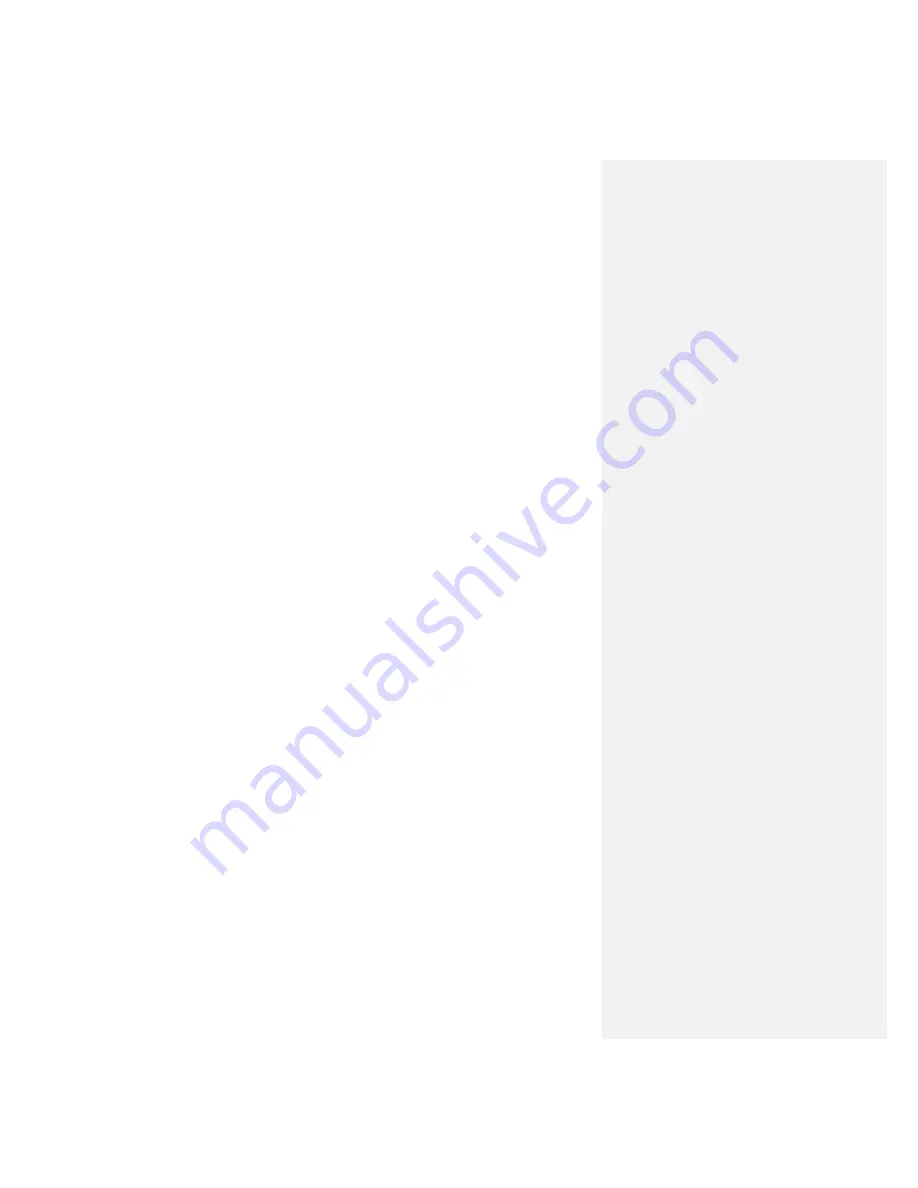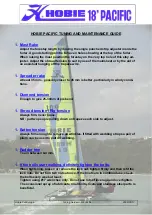
KEWA Manual © Copyright 2016
Page: 44
44
Gori Propeller
This propeller has blades that adjust to optimize the pitch for forward and reverse
motoring, and sailing. An additional feature of the Gori is that it has an “overdrive” to
enable more efficient propeller pitch when motor sailing.
The propeller requires annual, out-of-water servicing. The gears are exposed, and a good
cleaning, replacement of the “bumpers” and zincs, and lubrication keeps the prop in
working order. With the boat in the water, the zincs, of course, also need to be inspected
routinely and replaced as necessary. Present estimate is about every six months, but is
likely very dependent on the particular circumstances.
Reverse provides the same pitch as in the normal forward gear. Also, by keeping the
blades folded for the reverse gear, but going forward instead, you have what essentially is
a forward “high gear.” To achieve this, motor in reverse until the boat is moving through
the water backwards, then switch into forward gear while the boat is still moving
backwards. There is no need to jam the shifter into forward from reverse – stop for a few
seconds in neutral before pushing the shifter into forward. However, if the boat is in kept
in neutral too long and reverse momentum is lost, instead of going right into forward
gear, the blades will flip back to normal gear. In normal gear and flat water, the boat
typically achieves approximately 6 knots at 1700 rpm. In high gear, the boat should
achieve approximately 7 to 7.5 knots at 1700 rpm.
Sailing:
When sailing the blades will fold and the shaft will stop spinning giving you less drag
and more speed. With mechanical transmissions you should pout the shift lever into
reverse (per the engine manufacturer’s instructions), this will further hold the shaft
stationary. Hydraulic transmissions will not rotate when under sail with the Gori
propeller.
The previous owner reported 3 occurrences of rope/nets wound into the propeller and had
“spurs” (line cutters) installed. The debris never wrapped on the shaft, only in the prop
itself. They noticed it pulling when experiencing very inadequate power when pulling
into an anchorage and trying to stop the boat (the prop stops folding properly). The
solution is to put on dive gear and cut the fouling away.
When the propeller starts to turn under power, water pressure develops immediately on
the exposed portion of the blade. The water pressure determines if the blades open to the
right or to the left. The propeller opens one way when turning clockwise and the other
way when turning counterclockwise. The face of each blade has one pitch and the back of
each blade has a higher pitch.
When the vessel is put into forward, the propeller opens so that the face of each blade is
the positive pressure side. The water pressure pushing on the blade face pushes the vessel
forward. When the vessel is put into neutral before putting the vessel in reverse, the
blades fold immediately under the current caused by the forward motion of the vessel. In
reverse, the propeller rotates in the opposite direction, flipping the blades over. The water
Содержание KEWA
Страница 14: ...KEWA Manual Copyright 2008 Page 14 V30 is Ku band and global coverage is shown below...
Страница 22: ...Pacific Local Time UTC Time STD DST Ch Freq Band Net Type Comments 2000 0400 132 3856 Taco Baja also 1600...
Страница 63: ...Electronics Data Wiring Schematic...
Страница 129: ......
















































